Do you feel your old oscilloscope has served you long enough; is it bulky, cumbersome and feature-starved? Or, are you planning to buy an entry-level, digital oscilloscope for your basic test and measurement (T&M) needs but cannot figure out which one to buy? Look no further. In this article, we attempt to help you find the best oscilloscope for your application from a wide range available in the market.
Being a widely-used T&M instrument, an oscilloscope is a useful tool for any engineer, maker or hacker. It comes in a variety of form factors.
There are hardly any exciting developments or introductions transpiring in the entry-level, benchtop oscilloscope segment. However, there are many interesting universal serial bus (USB), do-it-yourself (DIY) and pocket-sized oscilloscopes that have been released in the last couple of years. From benchtop to portable and miniature ones, let us take a look at the wide variety of digital oscilloscopes available out there, which are also pocket-friendly.
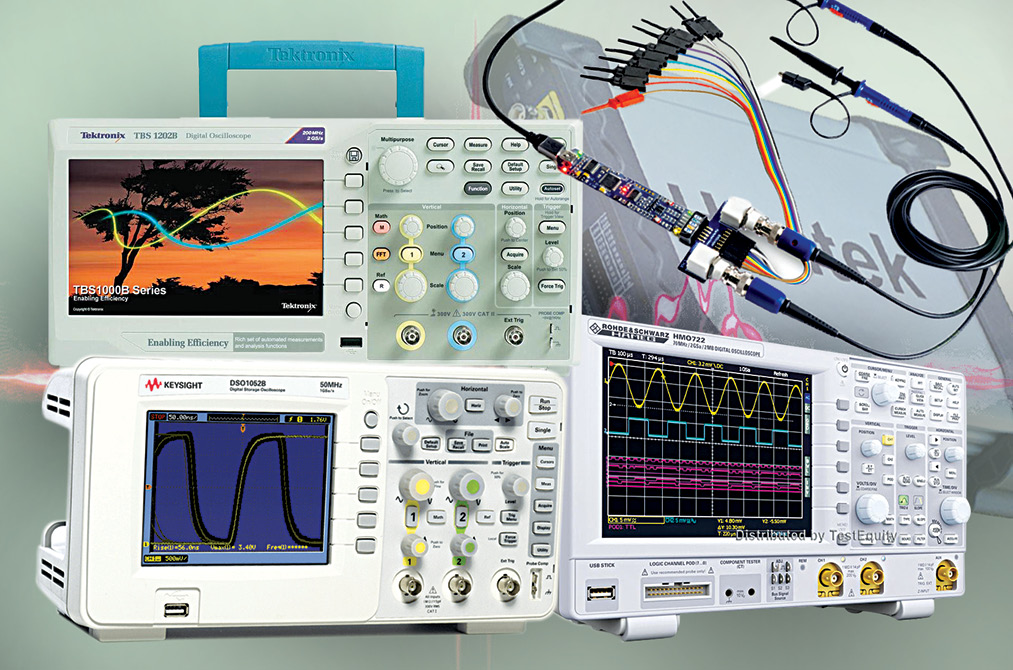
Benchtop scopes are reliable, provide solid performance
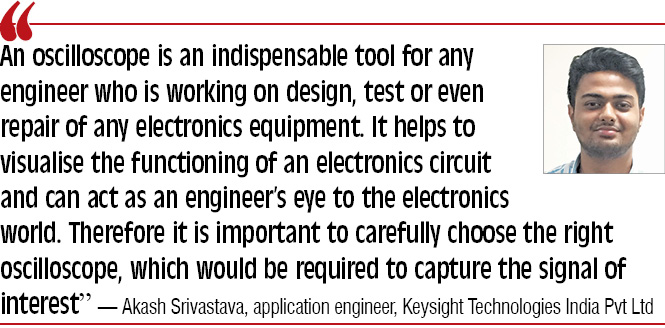 Many companies today are offering benchtop oscilloscopes targeted at engineers, hobbyists, do-it-yourselfers (DIYers) and design houses, providing affordable performance on a tight budget. Although, these limit mobility and consume considerable amount of bench space, most oscilloscopes available under this category come with reliable features required for basic T&M needs such as USB connectivity for easily connecting to a laptop or personal computer and data storage purposes, signal auto ranging, numerous automated measurements, automated data logging, frequency counter, auto set with selective bandwidth models like 25MHz, 40MHz, 50MHz, 60MHz, 70MHz, 100MHz, 150MHz and 200MHz.
Many companies today are offering benchtop oscilloscopes targeted at engineers, hobbyists, do-it-yourselfers (DIYers) and design houses, providing affordable performance on a tight budget. Although, these limit mobility and consume considerable amount of bench space, most oscilloscopes available under this category come with reliable features required for basic T&M needs such as USB connectivity for easily connecting to a laptop or personal computer and data storage purposes, signal auto ranging, numerous automated measurements, automated data logging, frequency counter, auto set with selective bandwidth models like 25MHz, 40MHz, 50MHz, 60MHz, 70MHz, 100MHz, 150MHz and 200MHz.
Considering a price point of Rs. 50,000 and below, majority of the general-purpose digital scopes offer bandwidths up to 70MHz with dual analogue channels. The sample rate for such oscilloscopes is usually between 1GSa/s and 2GSa/s. Higher bandwidth and four analogue channels for educational and industrial purposes exceed the ` 50,000 mark.
Apart from technical features, a unique aspect that some oscilloscope makers are incorporating is assistance for students and professors. For instance, Keysight Technologies’ DSO1000A/B series provides training tools such as education student lab guides and tutorials, and professor slide sets of oscilloscope fundamentals.
Tektronix’s TBS1000B-EDU series come with an integrated courseware feature, which gives educators the power to share courseware materials between professors from the same institute or anywhere around the world. Professors can create lab descriptions and instructions, which can be made available on the oscilloscope.
These oscilloscopes are best-suited for research and development (R&D) applications, engineering measurements at educational institutions, and standard manufacturing and testing.
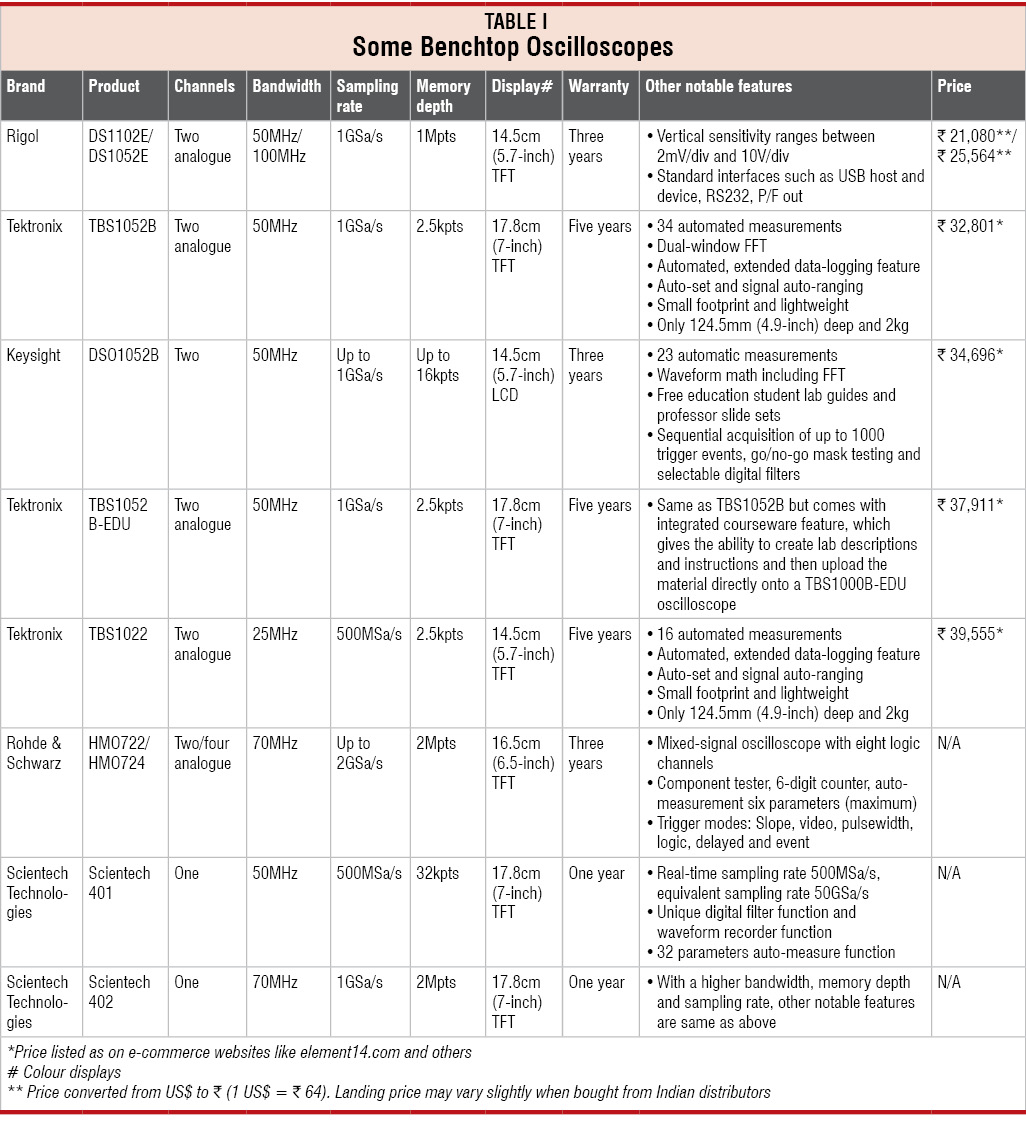

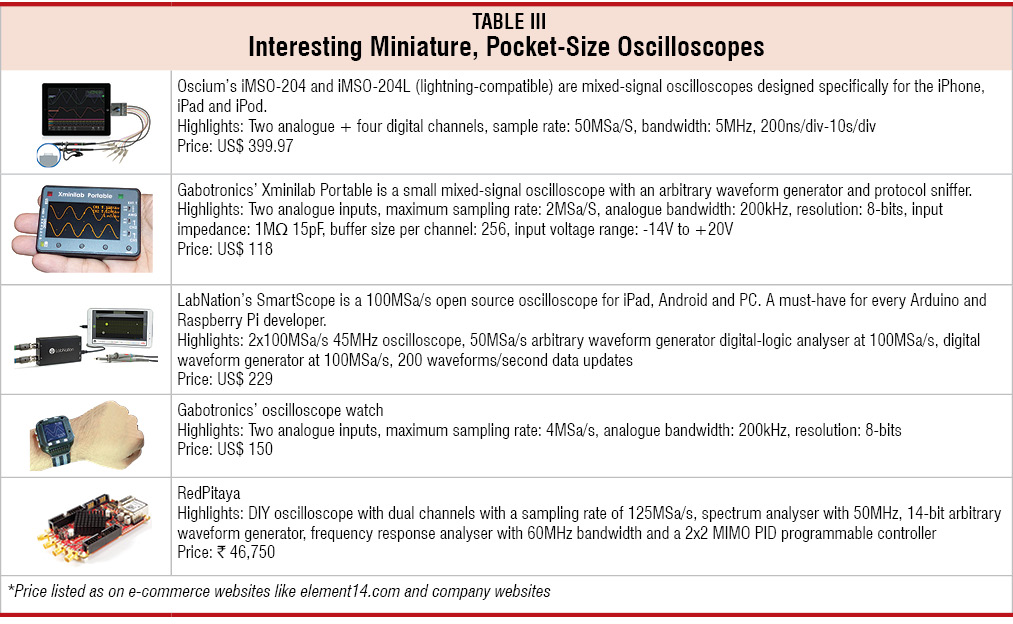
USB based and DIY oscilloscopes could be the right choice
 Some industry experts are of the opinion that USB scopes have not yet reached the level of desktop models, but these are getting better with technological advancements in terms of measurement and reliability.
Some industry experts are of the opinion that USB scopes have not yet reached the level of desktop models, but these are getting better with technological advancements in terms of measurement and reliability.
USB based scopes provide two important value additions to engineers—flexibility of converting a PC into a T&M platform and portability. In this era of the IoT, these scopes have a slightly greater edge over desktop versions. In fact, there are some interesting miniature devices that convert your laptops, tablets and mobile phones into a waveform analysing device at an affordable price. And, some of these are DIY type and open source, too.
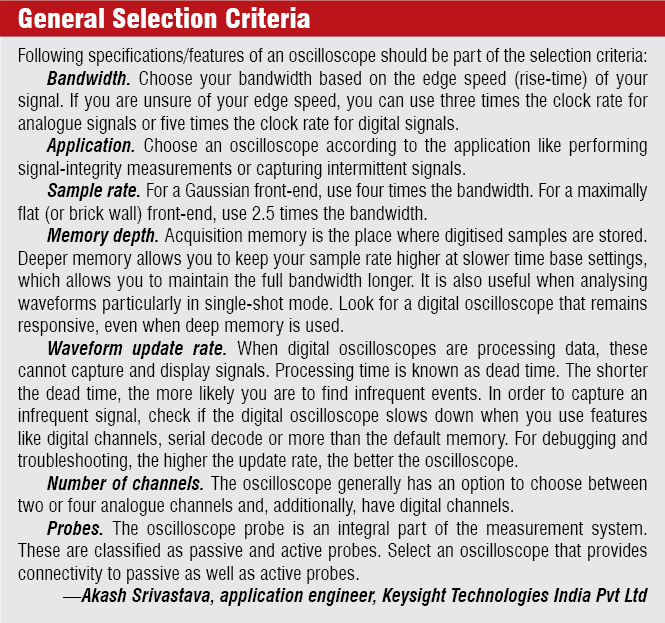
Of course, not all USB scopes are as accurate as traditional oscilloscopes. For critical applications, USB devices would probably not be the right choice, but these are perfectly suited for educational institutions as well as hobbyists and engineers working on small- and mid-level applications on a tight budget.
With even major T&M companies (that are known for impeccable desktop oscilloscopes) continuing to add support to their range of USB oscilloscopes and introduce newer versions, it would not be wrong to predict that USB oscilloscopes in the future could completely replace desktop oscilloscopes in the basic oscilloscopes segment for general-purpose usage, provided these are reliable and sturdy like traditional box-type instruments in their measurements and analysis. You can take a look at some of the interesting devices in this arena listed in Tables II and III.
Choose wisely
Between benchtop, USB and DIY, it could be a daunting task to choose the right oscilloscope for your needs. We have featured some of the hundreds of varying models with widely differing costs and specifications. It is important to invest some time considering the use case and application area of your potential oscilloscope. It would be wise to follow the try-before-you-buy policy, read reviews and ask the T&M vendor to provide a demonstration.
Warranty is also an important factor to pay heed to. Tektronix provides a five-year warranty on their benchtop scopes, whereas other reputed companies such as Rigol, Keysight and Rohde & Schwarz offer three-year warranty on their range of desktop scopes. USB and DIY scopes typically come with a one-year warranty. Features such as bandwidth, sampling rate and memory depth are not upgradable in most of the oscilloscopes in the market.






